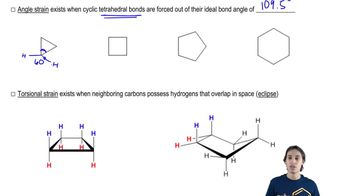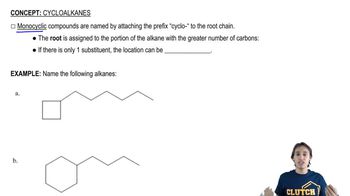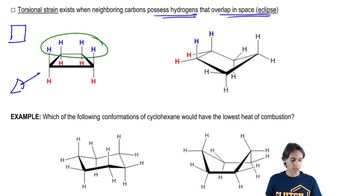Which conformation in each of the following pairs has the least strain energy?
(a)
 Verified step by step guidance
Verified step by step guidance Verified video answer for a similar problem:
Verified video answer for a similar problem:



 1:11m
1:11mMaster Understanding Heat of Combustion with a bite sized video explanation from Johnny
Start learning